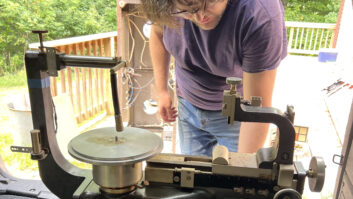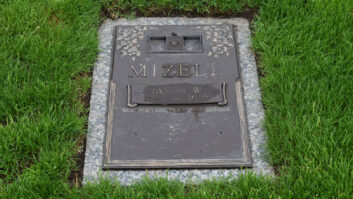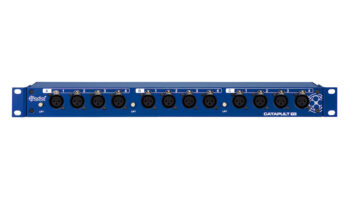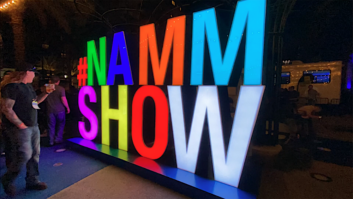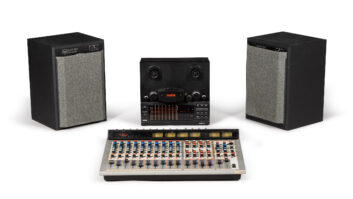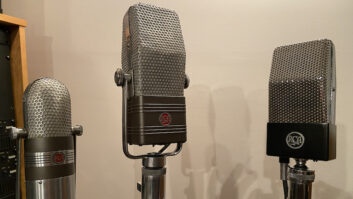For 40 years, MBHO has offered a variety of quality, affordable mics
for studio, measurement and stage applications. One of the company’s
more interesting products is a Jecklin Disc—a circular barrier
mount that accommodates two omnidirectional mics on either side of a 12-inch,
foam-covered disc, providing excellent stereo performance from a
simple, flexible system.
The Jecklin Disc was developed by Juerg Jecklin—hence the
name—who proposed his OSS (Optimum Stereo Signal), where two omni
mics were mounted on either side of a round barrier and splayed
slightly outward. Jecklin achieved the best results when the two
capsules were about 6.5 inches apart. The outward angle of the omni
capsules, their spacing, the effect of the nearby barrier (the disc)
and the small layer of foam (to prevent HF reflections) increase the
apparent separation as the frequencies rise, while having a minimal
effect on imaging at wavelengths below 200 Hz.
The Disc itself is 12 inches in diameter (and approximately
5/16-inch thick), and is made of a tough, hard polymer with six slots
where a stand-mount can be fitted, allowing the user to adjust the
mic’s angle of incidence in relation to the source. Mounts on either
side are provided for small-body—about ¾-inch—omni
condensers, from either MBHO or other suppliers. I tested the unit with
several omni mics, including MBHO’s 648 Series with numerous
interchangeable capsules with various preamp modules. Unlike other
stereo mics—such as AKG C24s or Crown SASS—the advantage of
using a stereo barrier/detachable mic approach (such as the Jecklin) is
that the mics can also be used separately in other configurations, such
as X-Y, spaced pair, ORTF, etc.
Of the two preamps I tried with MBHO’s KA-100D omni capsules ($237
each), I preferred the smoother sound of the transformer-coupled 648
($264) over the transformerless 603 ($603). Both preamps have extremely
fine threads that attach the electronics body to the capsule, and
because the bass roll-off switch is located on the covered top of the
preamp, users may need to remove the capsule head frequently.
On a chamber recording with a five-piece brass ensemble in a small
hall, the MBHO omnis/Jecklin Disc combination provided a wonderful
blend of the hall’s ambience with a tight, well-focused soundstage of
the players. The trick here was to experiment with placement: About 15
feet back with the mics angled slightly downward on an 8-foot stand was
just right. Placing them much closer (about two feet above the source)
as drum overheads for a rock session yielded a punchy sound with wide
separation: Here, the “hole in the middle” caused by the
mics being too close to the source helped keep the snare out of the
cymbal tracks while yielding a huge stereo image.
Sometimes rules are meant to be broken, and I also tried the Jecklin
with some cardioids for some in-your-face, exaggerated stereo
effects. Retailing at $219, the Jecklin Disc is a useful—and
sometimes fun—addition to your mic arsenal.
MBHO, www.mbho.de

